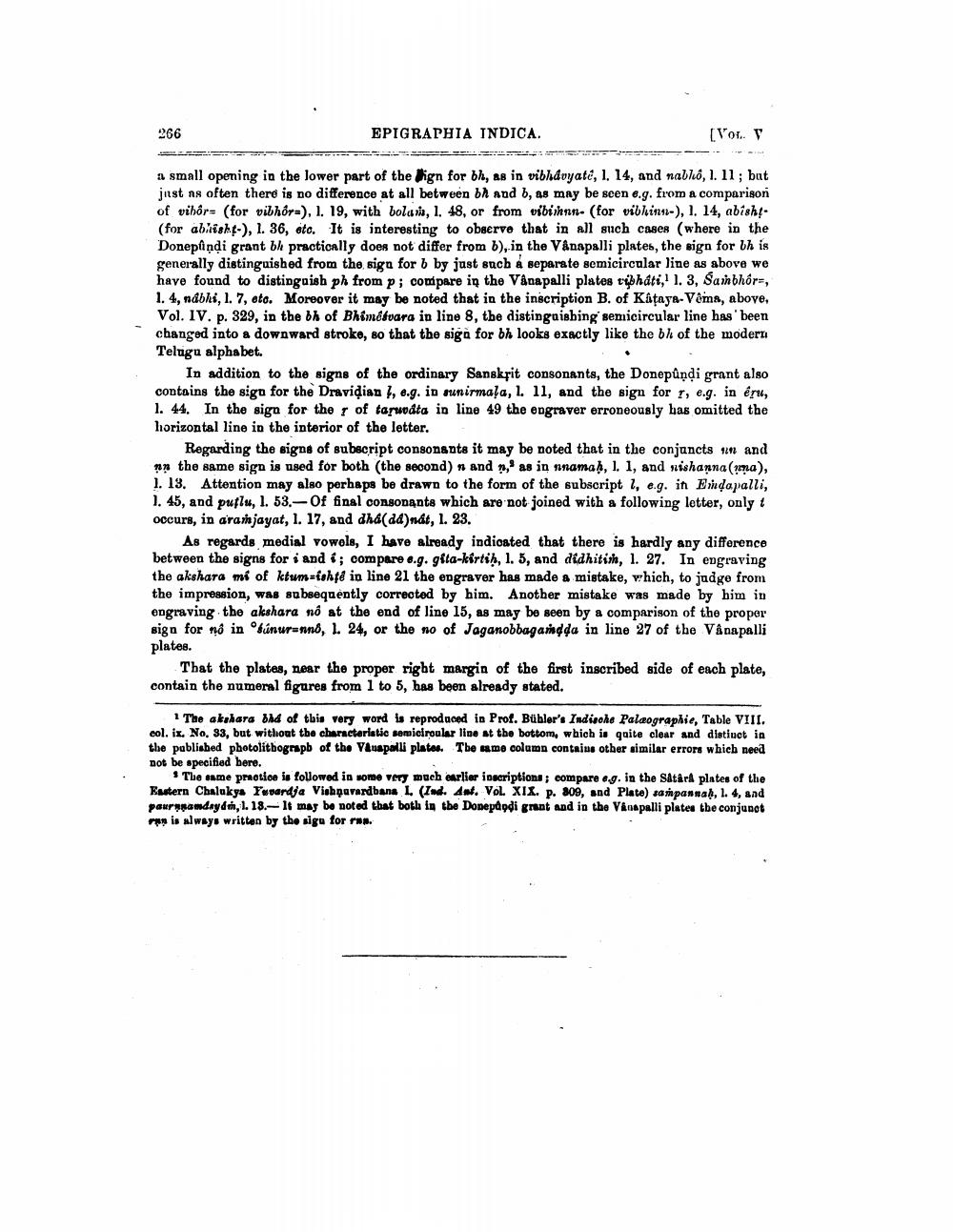________________
266
EPIGRAPHIA INDICA.
[VOL. V
a small opening in the lower part of the Mign for bh, as in vibhaoyate, 1. 14, and nablo, 1. 11 ; but just as often there is no difference at all between bh and b, as may be seen e.g. from a comparison of vihor= (for vibhôr-), 1. 19, with bolan, 1. 48, or from vibishnn- (for vibhinn-), 1. 14, abisht. (for abhisht), 1. 36, etc. It is interesting to observe that in all such cases (where in the Doneplundi grant bh practically does not differ from b), in the Vånapalli plates, the sign for th is generally distinguished from the siga for 6 by just such a separate semicircular line as above we have found to distinguish ph from p; compare in the Vånapalli plates ribháti, l. 3, Sambhor=, 1. 4, nábhi, 1. 7, eto. Moreover it may be noted that in the inscription B. of Kataya-Vema, above, Vol. IV. p. 329, in the bh of Bhim svara in line 8, the distinguishing semicircular line has been changed into a downward stroke, so that the siga for bh looks exactly like the bh of the modern Telugu alphabet.
In addition to the signs of the ordinary Sanskrit consonants, the Donepundi grant also contains the sign for the Dravidian , e.g. in sunirmala, 1. 11, and the sign for r, e.g. in érzi, 1. 44. In the sign for the r of tarwoata in line 49 the engraver erroneously has omitted the horizontal line in the interior of the letter.
Regarding the signs of subscript consonants it may be noted that in the conjuncts in and nn the same sign is used for both (the second) 1 and m, as in nnamaḥ, 1. 1, and nishanna (uma), 1. 13. Attention may also perhaps be drawn to the form of the subscript l, e.g. in Eidapalli, 1. 45, and puflu, 1. 53. Of final consonants which are not joined with a following letter, only occurs, in aranjayat, 1. 17, and dha(dd) nát, 1. 23.
As regards medial vowels, I have already indicated that there is hardly any difference between the signs for i and i; compare e.g. gita-kirtih, 1, 5, and didhitish, 1. 27. In engraving the akshara mi of ketum-sohl in line 21 the engraver has made a mistake, which, to judge from the impression, was subsequently corrected by him. Another mistake was made by him in engraving the akshara nô at the end of line 15, as may be seen by a comparison of the proper sign for nå in fúnur=ano, I. 24, or the no of Jaganobbagandda in line 27 of the Vanapalli plates.
That the plates, near the proper right margin of the first inscribed side of each plate, contain the numeral figures from 1 to 5, has been already stated.
1 The akahara Ond of this very word is reproduced in Prof. Bübler's Indische Palaographie, Table VIII. col. ix. No. 33, but without the characteristic semiciroular line at the bottom, which is quite clear and distiuet in the pabliabed photolithograpb of the Vauapalli plates. The same column contains other similar errors which need not be specified bere.
The mame protion is followed in some very much earlier inscriptions; compare ag. in the Stara plates of the Eastern Chalukya Yunandya Vishpavardbana L (Ind. Ant. Vol. XIX. p. 309, and Plate) sampansah, I. 4, and paurunamdaydn, 1.18. It may be noted that both in the Donepodi grant and in the Vanapalli plates the conjunot run is always written by the siga for run.




